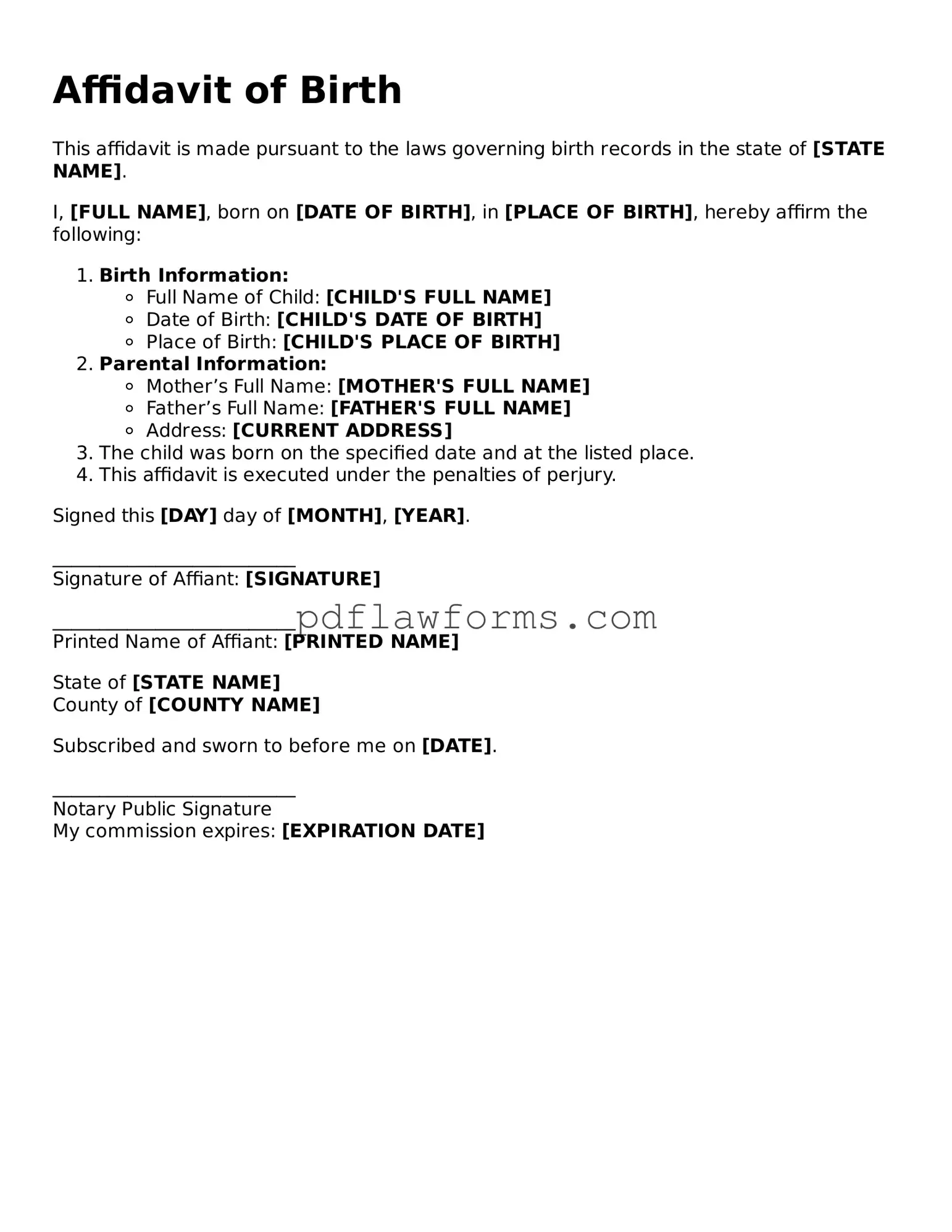Filling out the Affidavit of Birth form can seem straightforward, but many individuals make common mistakes that can lead to delays or complications. One frequent error is failing to provide accurate personal information. This includes the full name of the child, date of birth, and place of birth. Inaccuracies can create confusion and may require additional documentation to correct.
Another mistake involves not including the names of the parents. Some people assume that the form only requires the child’s information. However, both parents' names are essential for establishing legal ties and ensuring that the affidavit is valid.
Many individuals overlook the importance of signatures. The affidavit must be signed by the person completing it, usually a parent or guardian. Failing to sign the document renders it incomplete. In some cases, witnesses may also be required to sign, depending on state laws.
Not providing supporting documentation is another common error. Many jurisdictions require additional proof of the child's birth, such as hospital records or other identification. Omitting these documents can lead to the rejection of the affidavit.
People often forget to check the form for completeness before submission. Leaving sections blank or providing incomplete information can result in processing delays. A thorough review can catch mistakes before they become a problem.
Another issue arises when individuals fail to understand the specific requirements of their state. Each state may have different rules regarding the Affidavit of Birth, including who can sign and what additional information is needed. Researching these requirements beforehand can save time and frustration.
Finally, procrastination can lead to errors. Rushing to complete the form at the last minute can result in careless mistakes. Taking the time to carefully fill out the affidavit and gather necessary documents is crucial for a smooth process.
